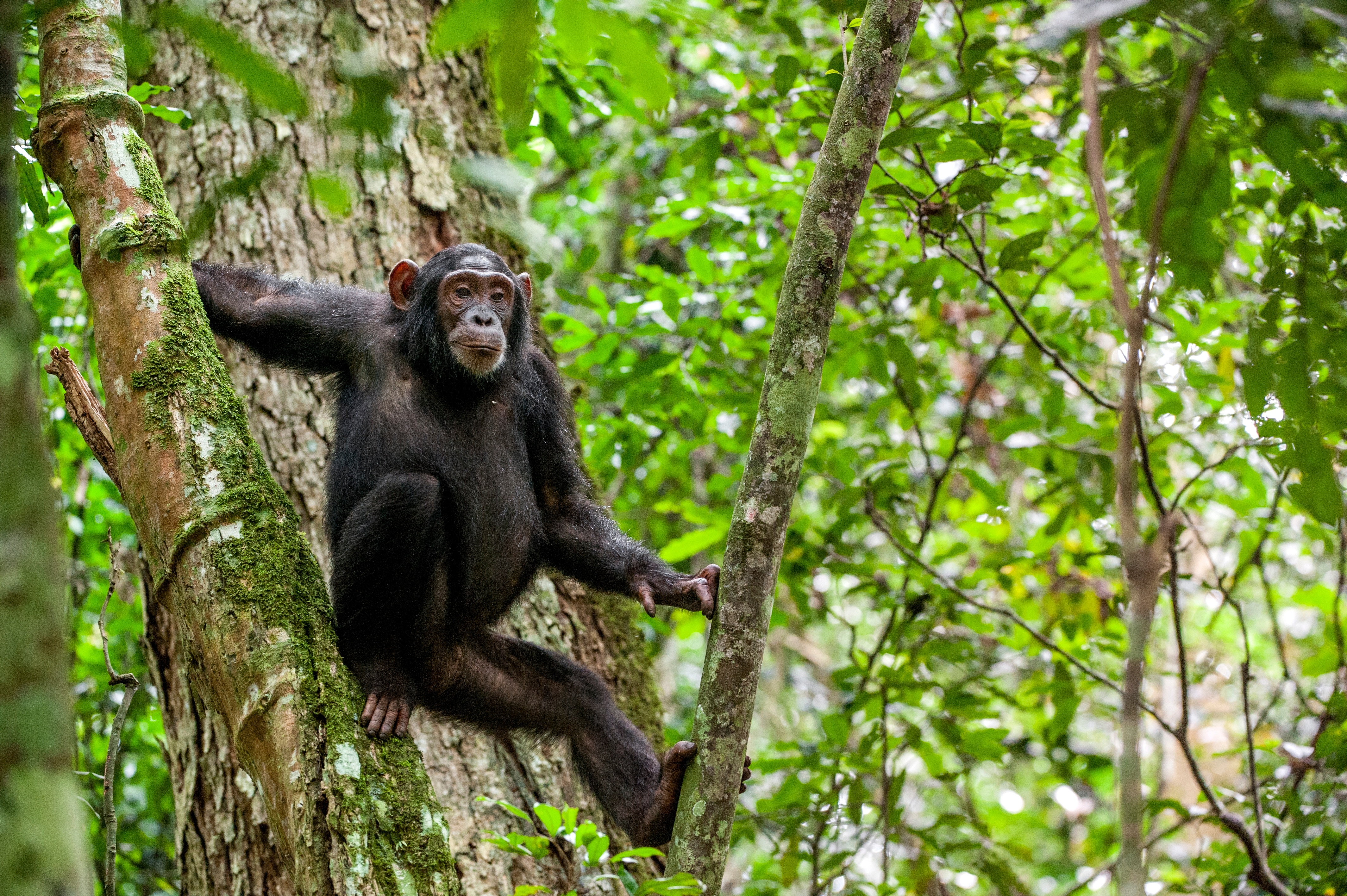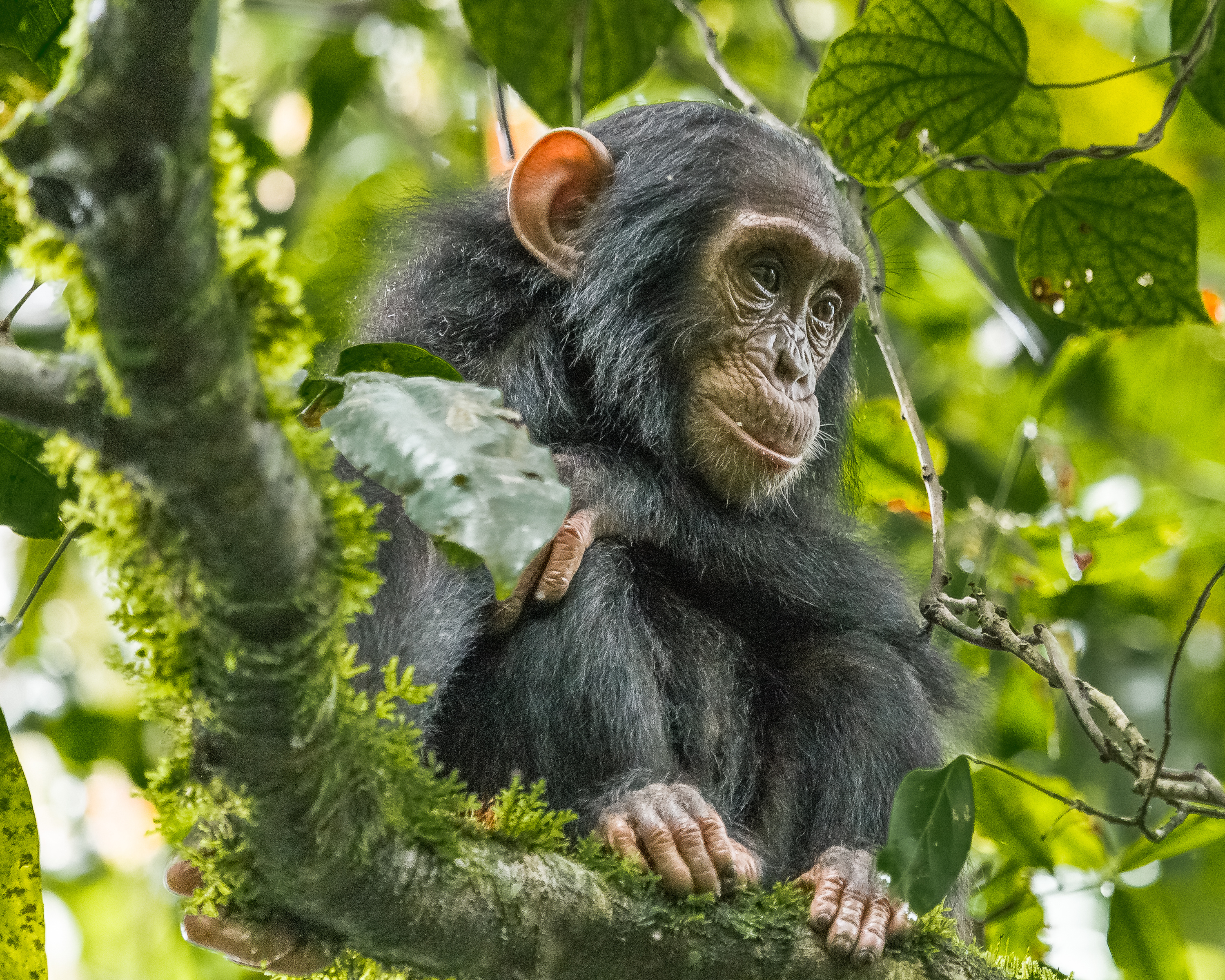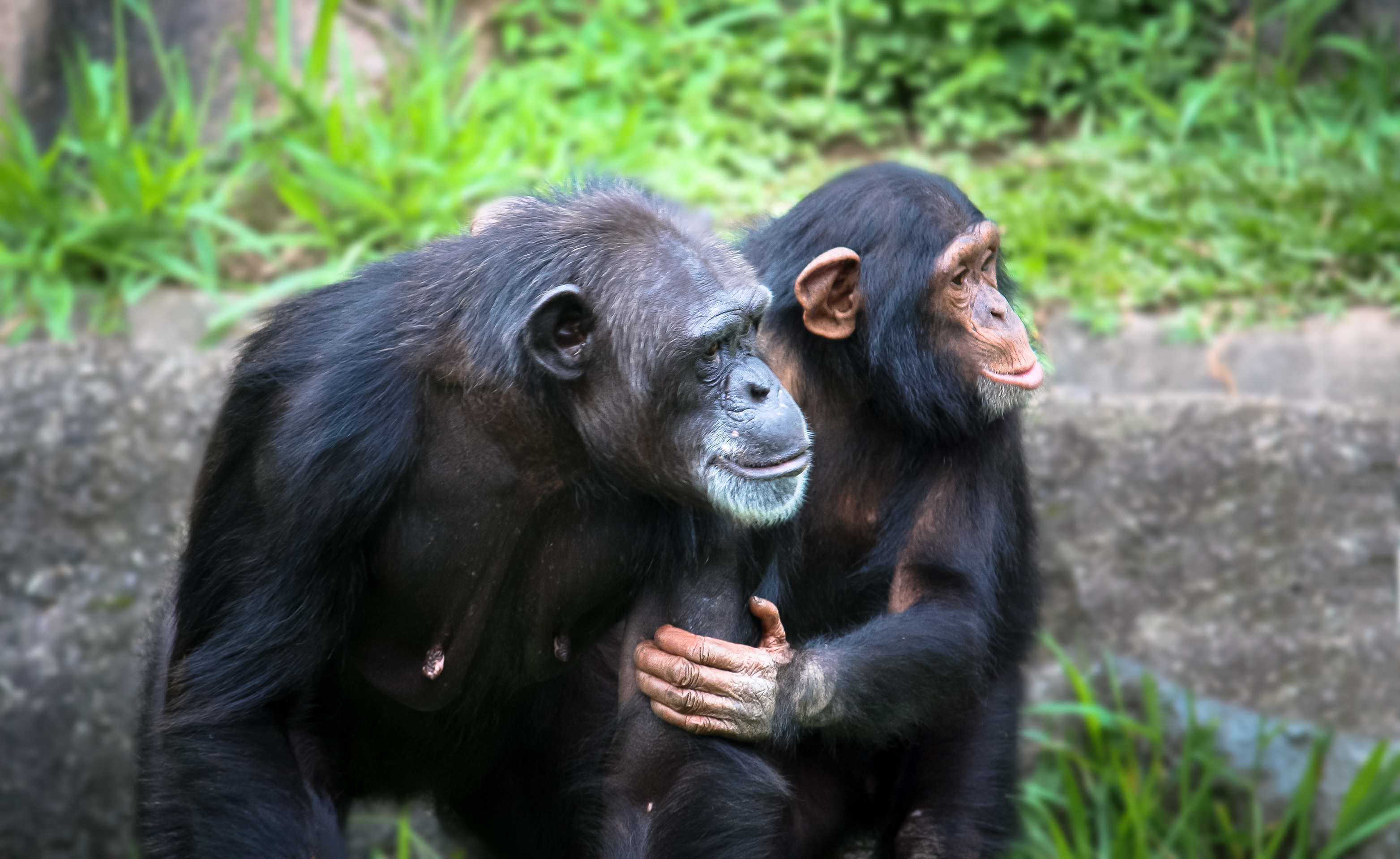How Community-Led Conservation Is Helping Chimpanzees Thrive in West and Central Africa

Chimpanzee in West Africa hanging on a tree.
The rainforests of West and Central Africa are alive with sound and life. Beneath a thick canopy where sunlight filters through towering trees, ferns and vines tangle across barely visible trails. These forest paths—shaped by people and wildlife—wind through one of the world’s richest ecosystems, home to the iconic central chimpanzee.
As one ventures deeper into the forest, the sounds shift—from birdcalls to the pant-hoots and soft grunts of chimpanzees communicating through the undergrowth. Here, under the forest canopy, these great apes are at home. But for how long?
Why Chimpanzees Matter for Forests and People
Chimpanzees are more than charismatic wildlife. They are essential to forest health and biodiversity. As seed dispersers, they help maintain forest structure, support regeneration, and control insect populations. Their presence signals a healthy ecosystem—a critical indicator of environmental well-being.
Yet, these great apes have been classified as endangered by the International Union for Conservation of Nature (IUCN) since 1996. With populations ranging between 150,000 and 250,000, chimpanzees face growing threats from habitat destruction, poaching, disease, and climate change.
Four subspecies of chimpanzees span the African forest belt, from Senegal to western Tanzania. The African Wildlife Foundation (AWF) focuses on protecting chimpanzees in key countries such as Cameroon, the Democratic Republic of Congo (DRC), and Uganda—where urgent, localized action is needed.
“The protection of chimpanzees across West and Central Africa must be seen within the broader context of securing Africa’s biodiversity and ecological systems,” explains Dr. Philip Muruthi, AWF’s Vice President for Species Conservation and Science. “These species are not only integral to the health of forest ecosystems but also serve as indicators of the overall stability of natural habitats that support millions of people.”
A Regional Strategy for Chimpanzee Conservation

Chimpanzee baby on a tree
Chimpanzee habitats stretch across multiple borders, making regional collaboration crucial for their protection. In landscapes like Bili-Uere in the DRC and Dja Faunal Reserve and Campo Ma’an National Park in Cameroon, AWF is working closely with governments, communities, and international partners—including the European Union, UNESCO and the Ministry of Forestry and Wildlife in Cameroon—to implement various programs to stabilize these chimpanzees populations .
In these landscapes, AWF supports eco-guards who carry out extended patrols to monitor chimpanzee populations, detect poaching activities, and collect vital ecological data. This integrated approach combines biodiversity protection with human development and governance support.
“This key initiative by AWF brings a holistic conservation approach,” says Lesly Akenji, AWF’s Senior Landscape Manager. “Through conservation education and outreach, we’re actively discouraging the hunting and sale of chimpanzee meat, while building a culture of coexistence.”
Communities, Technology, and Conservation Education
Long-term chimpanzee conservation depends heavily on local communities. AWF-trained eco-guards across various landscapes use camera traps to capture chimpanzees and other animals at dawn and dusk. This monitors the numbers, identifies areas of intervention, and gives critical details on group size and behavior.
Eco-guards often go on patrols with GPS devices, identifying and mapping safe corridors for the animals and reporting any new threats along these paths. The Ecoguards, through a mobile phone application called SMART, send real-time alerts about snares or illegal logging, thereby improving response times for other ecoguard teams.
In the Dja and Campo-Ma'an Landscapes in Cameroon, a critical bond between farming communities and eco-guards has led to a recovery in chimpanzee numbers.
Awareness campaigns targeting these two groups have fostered collaboration, with farmers informing eco-guards of fresh snares or spot poachers. Alongside the use of technology, community-based monitoring approaches have been used which integrates indigenous knowledge into chimpanzee monitoring. This has increased the level of trust enabling community volunteers to carry out foot patrols alongside eco-guards, who together find and remove dangers such as wire traps. cess.
In schools, AWF has helped establish environmental clubs where children learn about the role of chimpanzees in forest ecosystems. They participate in nest counts and draw maps of wildlife trails. At the same time, their parents engage in AWF-supported alternative livelihoods like beekeeping—reducing pressure on natural resources.

Chimpanzee family in West Africa
A Model for Wildlife Conservation in Africa
AWF’s model demonstrates that effective wildlife protection in Africa must be community-led, data-informed, and grounded in local realities. Through partnerships, technology, and grassroots education, chimpanzees are making a slow but hopeful recovery.
Protecting endangered species like the chimpanzee is not just about saving wildlife—it’s about protecting ecosystems that millions of people depend on. As these forest landscapes begin to thrive again, so do the communities that call them home.